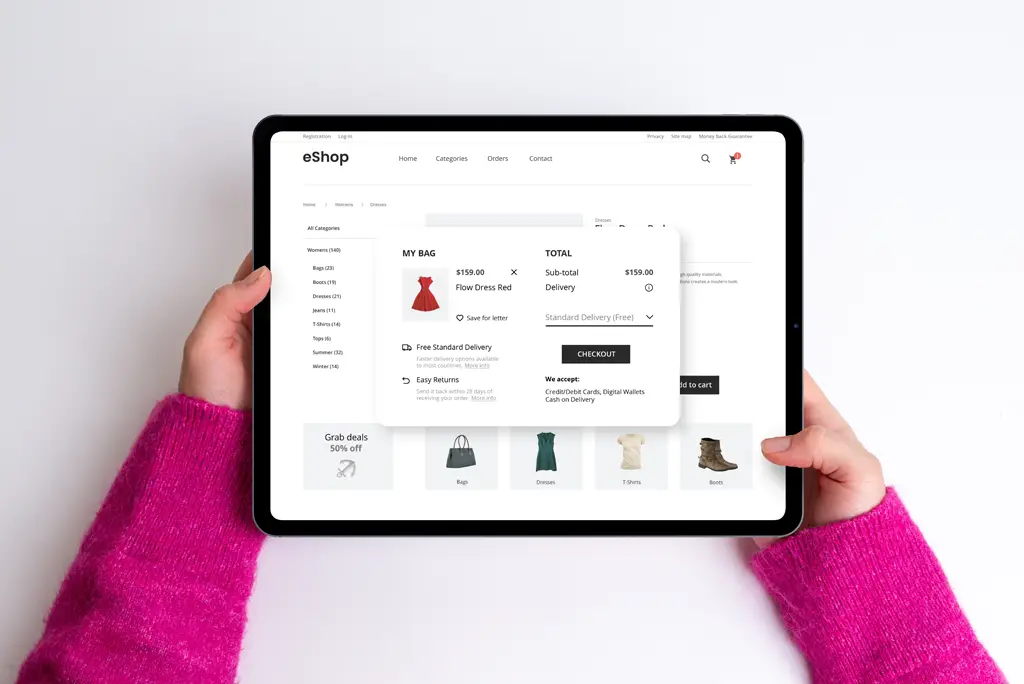The world’s most successful online businesses are more than just websites; they’re also platforms that power entire communities. This makes sense, considering that an active online community is what makes a brand powerful in the first place. Popular online communities like GoodReads, DeviantArt, or CouchSurfing work because they empower users to meaningfully interact with one another in ways that other websites do not.
The focus of online communities is not limited to hobbies like reading, drawing, and traveling. They also play an important role in the commercial enterprise. Look, for instance, at Amazon’s comprehensive review community. Amazon customers rely on one another to choose from the eCommerce giant’s network of third-party dealers. The user community is an integral part of what makes the platform valuable.
The benefits of an online community are priceless for businesses today. In this guide, we explore how product leaders and web developers can design with user communities in mind to position themselves for market dominance.

How to Design for a Community of Users
Since the advent of social media, almost every online company has worked to incorporate community interaction into its core business—some more successfully than others. Web entrepreneurs who pay attention to industry successes and learn from failures are best positioned to become online marketplace leaders.
Designing website functionality for an online community is an inherently UX-focused task. UX (user experience) design experts use the following strategies to encourage community contribution and grow their websites into reputable web platforms.
1. Design for Value-Oriented Contribution
When developing for user communities, web developers need to solve two problems simultaneously:
- Showcase the value of the online community itself
- Make it easy for users to browse and contribute to the content
The most practical way to achieve this is simple: Design the website consistently with the user’s purpose. TripAdvisor offers a great example of how this works in practice. Whether browsing or posting about hotels, flights, restaurants, or vacation rentals, there is no part of the TripAdvisor website that isn’t designed for the goal of planning the perfect trip.
To stay competitive, it’s also critical to integrate modern tools, such as AI-powered recommendations and personalized content feeds, which help users discover relevant content more effectively and keep them engaged longer. This added layer of personalization boosts community participation, as users feel more connected to the content shared by others.
2. Accommodate Users at Every Stage
To design a community website for value-oriented contributions, you must define those contributions for users. Most users follow a predictable pattern. They start as casual browsers, become committed searchers, and ultimately become valuable contributors. The website should accommodate every stage of that path.
One of the most effective and popular ways that online community websites do this is through an activity feed. A unifying website structure that accommodates every user journey stage prevents UX friction.
Further enhancing this journey can be achieved through mobile-first design. As more users access community sites via smartphones, it’s critical that the user experience is seamless and intuitive on mobile devices. Prioritizing mobile usability ensures that users remain engaged regardless of the platform they choose.
3. Develop Separate Home Pages
One of your website’s most important pages is its homepage. This is every user’s first impression, and it needs to adapt to their expectations and stage in the user journey.
The easiest and most effective way to do this is to develop a homepage for website visitors who aren’t signed in and a similar homepage for users who are signed in. While the structure of these pages should be visually similar, the content should be different. First-time visitors need to glimpse the breadth and depth of the content your platform offers. Conversely, signed-in users should have immediate access to the content that interests them most.
Additionally, AI-driven personalization can be used to customize the homepage even further, presenting content that is tailored to the individual user’s preferences, behavior, and past activity.
4. Excellent Navigation and Usability
Innovation isn’t always a good thing when it comes to UX design. While there are many opportunities to advance UX principles, overengineering can paradoxically make things harder.
This is especially evident in website navigation. Adhering to well-known UX patterns that rely on users’ existing expectations produces better results than navigation and usability innovation. For instance, users expect to find a checkout basket in the top right corner of an eCommerce site to complete a purchase. Changing your site’s checkout process may confuse users and lead to purchase abandonment.
Online communities tend to have a very large surface area. Therefore, they should be easily navigable from any page to almost any other.
To keep navigation intuitive, consider adding search functionality and filtering options based on user interests, which are becoming increasingly vital for large-scale community platforms. Additionally, real-time search suggestions powered by AI can quickly guide users to the content they are looking for, further streamlining the browsing process.

5. Highly Personalized User Profiles
Since your online community’s users are your most valuable asset, you want to encourage them to contribute as much as possible. Users with highly customized profiles spend more time creating and sharing content. Nudge your users to make more complete profiles to encourage greater content volume.
This also influences UX design for business communities. Unique employee profiles can help users identify official employee or executive accounts when communicating or planning events with one another.
To enhance user engagement, consider incorporating gamification elements like badges, leaderboards, and achievements into user profiles. This approach incentivizes contributions and fosters a sense of achievement. With personalized notifications, users can be encouraged to engage with specific content or connect with others based on shared interests, increasing activity within the community.
Be Your Users’ Social Facilitator
A great community website acts like the gracious host of a formal party, introducing guests to one another and fostering a sense of togetherness that would not occur on its own. This approach guarantees sustainable user contributions, whether your user community comprises unknown website visitors, existing leads, or company employees.
To stay ahead, ensure that your online community integrates the latest trends in AI-driven personalization, real-time social engagement, and mobile-first design. And don’t forget to implement strong security and privacy measures to protect your users’ data. In today’s digital landscape, building a trustworthy and engaging community site is more important than ever.
Need help building or optimizing an online community site? Let’s chat.


